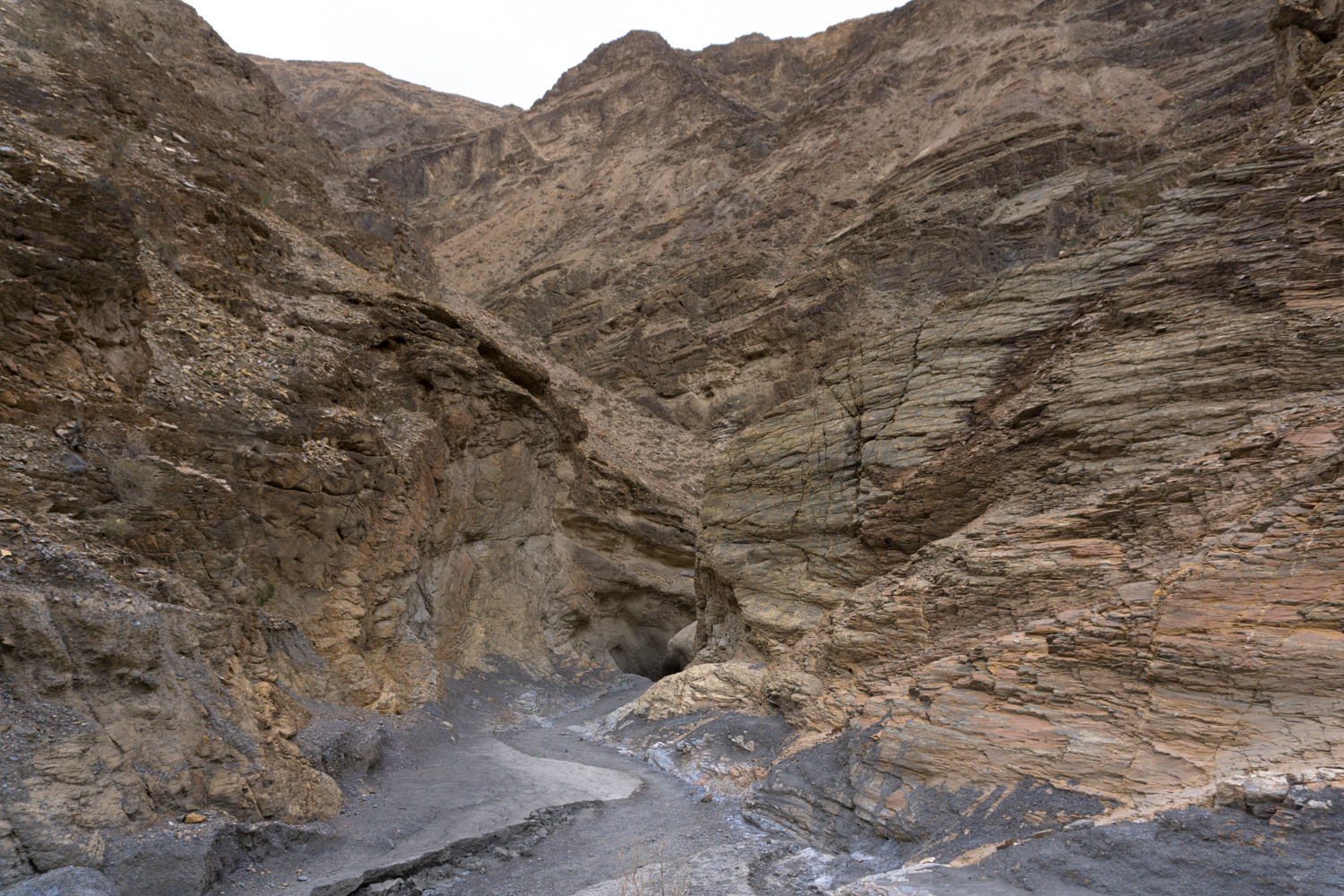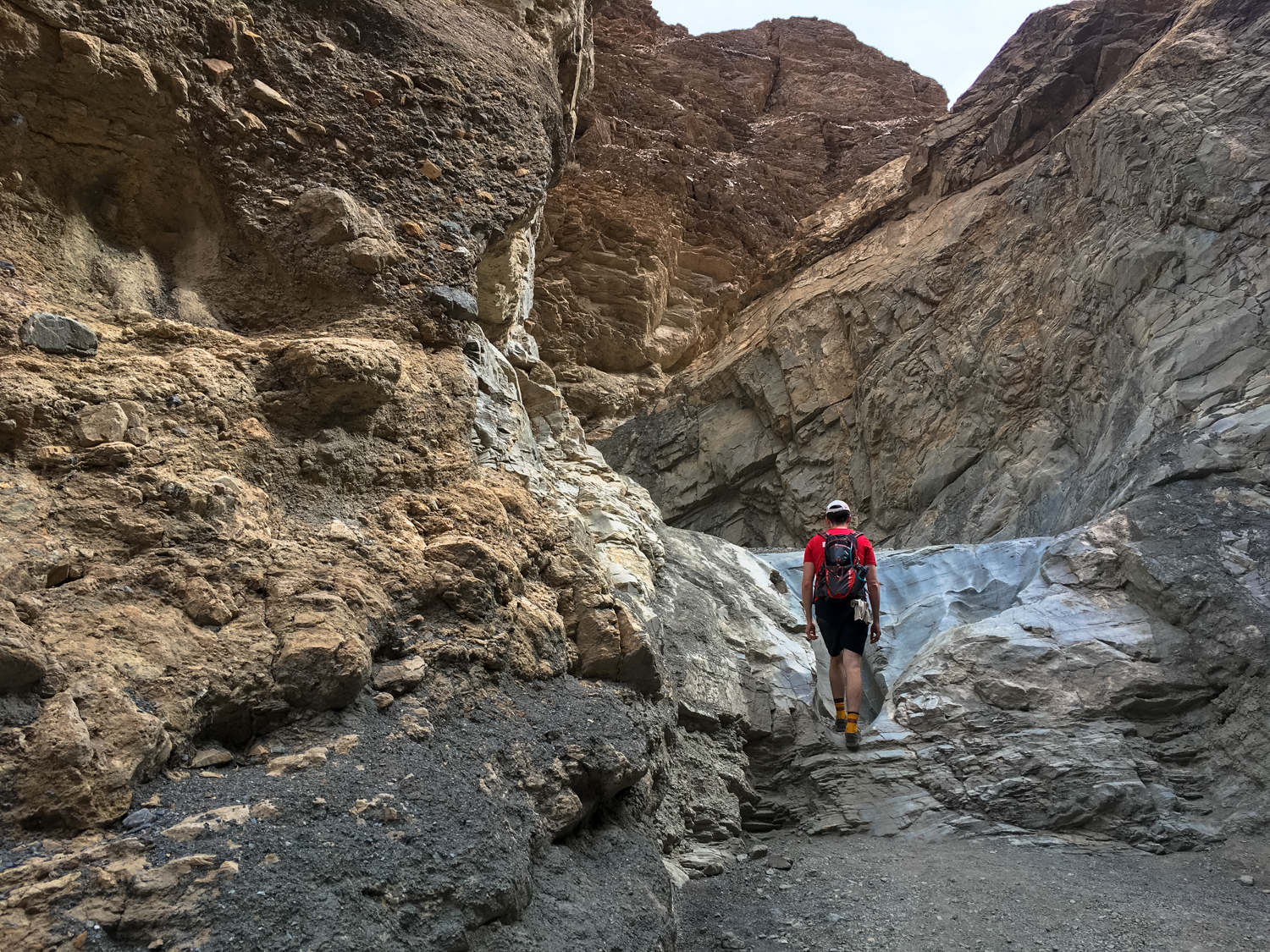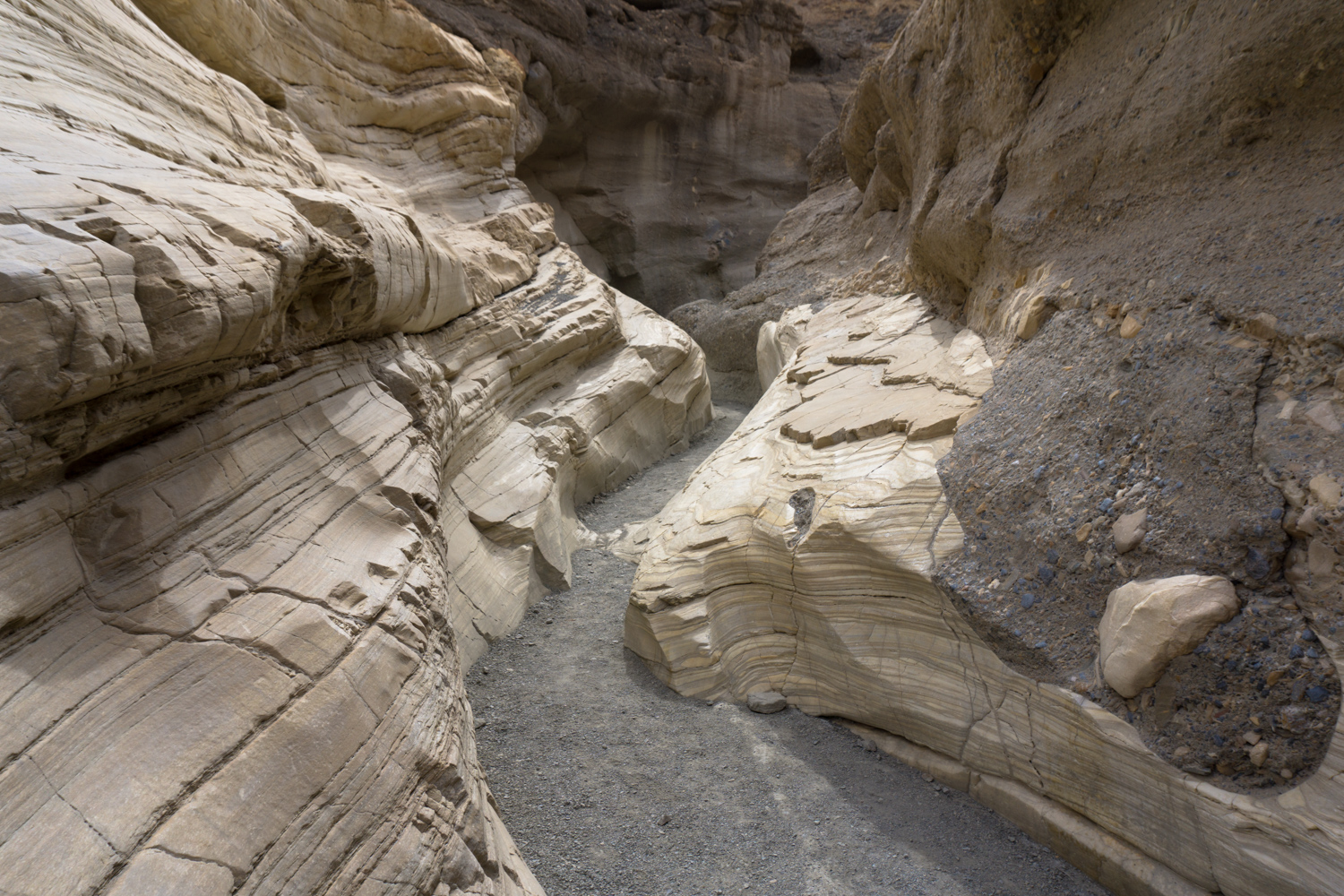Just outside the Stovepipe Wells Village and at the western entrance to Death Valley itself, Mosaic Canyon offers up a solid introduction to navigating the region’s slot canyons. It’s a must-stop for adventurous hikers and those interested in geology, especially, but even the lower section of the canyon should be doable for the average hiker (and even hiking youngsters, assuming they’re OK with the heat and sun here).
The trailhead begins at the end of Mosaic Canyon Road, a 2.3 mile dirt road that begins just across the street from Stovepipe Wells Campground. The road is usually passable for most passenger cars, but you may want to check with the rangers if there’s been rain recently. Drive slowly and park at the trailhead, which can often get crowded late into the morning, as this is a fairly accessible trail that happens to be located near one of the few developed areas in the park.
Even if the trailhead looks full, though, don’t be discouraged — many explorers will turn back at the first major obstacle in the canyon, and the region’s twists and turns often give you a greater sense of solitude than you actually have.

Although there are some nice, shady sections of the trail here, remember that you are in the desert and will still spend lots of time in the hot, dry sun. Even though it’s a relatively short hike, pack lots of water, sunscreen, salty snacks, and make sure you have a shady hat and sunglasses before you proceed.
Head south from the parking area into the wide wash of Mosaic Canyon.
You may note some trails leaving the main wash and climbing up side canyons or ridges throughout the hike — in general, it’s best to ignore them. There is only one section where you should leave the main wash of Mosaic Canyon to continue the hike. Every other option just adds unnecessary elevation gain and worse, might send you far off the actual hike.
Just before the 0.3 mile mark, the canyon narrows significantly, unveiling some of the fascinating geology that has made this hike such a draw.

You’ll notice the ground you’ve been hiking in on has been pretty gravely — much more so than the surrounding areas of Death Valley. During flash floods, this gravel mixes with the fallen rainwater and the fast-moving, turbid mixture scours the sides of the canyon walls. In places like the Narrows shown above, the remaining rock is a hard, polished marble. Keep this in mind during sections of the hike where you’ll have to climb up and over this rock, because it’s a lot more slippery than you’d think (which means on the way down, you may also want to look for places where you can slide down, too!).
The other main type of rock that you’ll see here is the one that gives Mosaic Canyon its name — Mosaic Canyon Breccia is a type of natural cement that holds fragments of many other types of rocks, and the appearance is somewhat like a tile mosaic.

In some places in the canyon, this rock is also polished smooth, which definitely accentuates the mosaic-like qualities
The hike is mostly easy going at first. You’ll pass through the Narrows and at about 0.5 mile, the canyon widens out a bit again. There are side trails here that climb ridges on both sides of the wash, but it’s best to just stay inside the wash itself.


At about 1.3 miles into the canyon, the route seems to be blocked by this large boulder jam:

For many hikers, this is a fine turnaround point. But if you came here for the scrambling and exploring, head to the east (left-hand) side of the boulders. With a short scramble and squeeze (you might have to remove your backpack to get through), you’ll come out into a small alcove where a clear path will take you between the boulders and further into the canyon.

Once you pass the boulder jam, it’s only another 0.2 mile until it seems like the hikeable part of the canyon ends once again:

This 20-foot slanted dryfall looks like another dead-end. Although it is technically possible to climb the falls (assuming you have adequate climbing experience and training), you should instead just backtrack a bit to the vantage point of the above photo and look to your right. You’ll spot a faint but clear bypass trail that easily climbs up and over the dryfall.

The trail is pretty narrow and has some very steep drop-offs, but is on solid footing and shouldn’t present too much of an obstacle for most hikers.
A note here: once the trail tops the dryfall, head back into the wash. A rough footpath makes it seem like the bypass trail continues up the side of the canyon wall, but following this false trail will get you stuck on a high precipice fairly quickly.
The canyon continues south beyond the dryfall in a broad wash that narrows and heads east at 1.7 miles. There are a few short scrambles on smooth, polished rock here (so tread carefully!), before you reach a small amphitheater at the base of an impassable 30-foot dryfall at the 1.8 mile mark. This is the end of the hikeable part of the canyon, and a great place to grab a quick snack or lunch before carefully returning back the way you came in.

the final 30-foot dryfall
Tags: death valley national park, mosaic canyon, slot canyon, Stovepipe Wells













